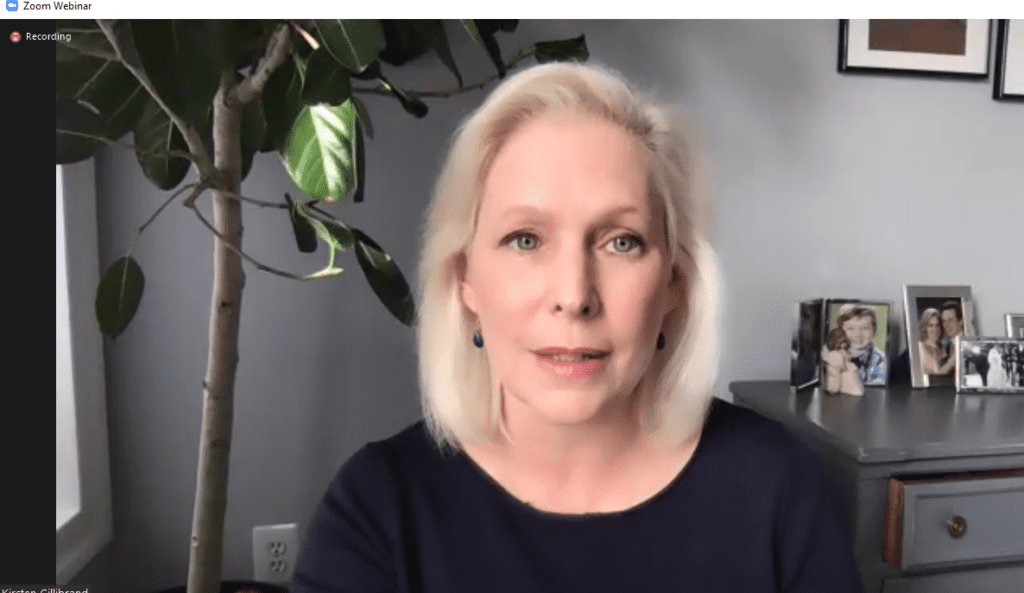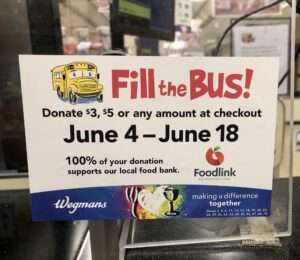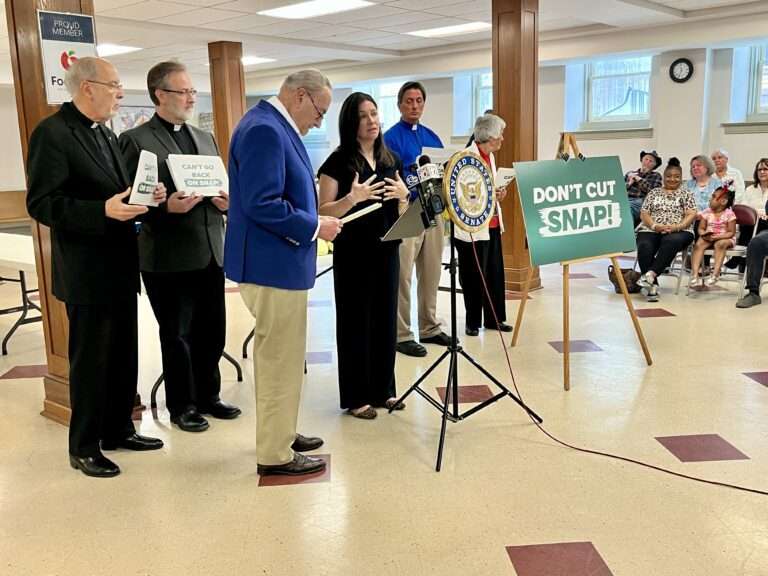
Foodlink President & CEO Julia Tedesco joined federal officials and representatives from other anti-hunger organizations around New York for a news conference on the day before Thanksgiving to talk about food insecurity around the state and nation amidst an unprecedented public health crisis.
Speakers included Joel Berg, CEO, Hunger Free America, U.S. Senator Kirsten Gillibrand, U.S. Congressman Joseph Morelle, Chef Tom Colicchio, TV Host, and Co-Founder, A Place at the Table, and several other officials from around the state.
Hunger Free America’s annual survey of hunger in New York City and State found that, in 2020, a historic surge in federal funding for SNAP (formerly called Food Stamps) benefits dwarfed the sharp hike in food distributed by charitable food pantries and soup kitchens.
The city’s food pantries and soup kitchens fed more than 65 percent more people in 2020 than in 2019. This is a huge jump compared to previous annual increases of 10 percent in 2019, five percent in 2018, six percent in 2017, nine percent in 2016, and five percent in 2015.
“While charitable food pantries and soup kitchens citywide and statewide struggled heroically to meet the increased demand during the pandemic, they were only able to scratch the surface of the need, and the only thing that truly prevented mass starvation here was a historic surge in federal funding for SNAP benefits,” Berg said. “The City and State agencies that administer SNAP – and their rank-and-file employees – are our greatest hunger heroes in this crisis.”
Tedesco said food banks are doing all they can, but like the other speakers, made the case that SNAP is our nation’s greatest defense against hunger. Congress has yet to act on anti-hunger organization’s plea for a 15% increase in SNAP benefits during the pandemic.
“The demand for our work – and for the work of the other 9 food banks across our entire state, has surged by 40-50 percent since March,” Tedesco said. “All of us have rapidly evolved our distribution methods to meet the needs of this moment, but our collective response comes no where near the federal government’s ability to provide a true safety net. For every 1 meal a food bank in this nation provides, SNAP provides at least 9. Charities like Foodlink would never be able to provide this level of assistance.”
Statewide, more than 85 percent of food pantries and soup kitchens said they fed more people in 2020 than 2019, with more than 21 percent reporting they have had to turn people away, reduce the amount of food distributed per person, or limit their hours of operation because they lacked enough resources in 2020. In New York State outside of New York City, more than 70 percent of respondents who reported an increase in people served since the start of Covid-19 attributed the increase to adults having lost their jobs and/or incomes, more than 40 percent of organizations attributed the increase to the loss of school meals, while more than 22 percent of pantries and kitchens cited the closing of senior centers.
In March 2020, 2,561,187 state residents (including those in NYC) received SNAP, obtaining $355,020,610 in federally-funded benefits. By August 2020, the caseload had increased to 2,756,187 people, and the total amount of benefits received that month had increased to $488,159,706. Thus, the caseload increased by eight percent, and the benefits amount increased by 38 percent over just those five months, the most rapid increase in the history of the modern SNAP/Food Stamp Program since it was created in 1977.
Continued Berg: “The pandemic and the national economic collapse during the last eight months have resulted in an estimated 2 million New York City residents struggling with food insecurity. Statewide, food insecurity has doubled in the pandemic, and now hunger is an even worse problem in rural, suburban, and urban communities throughout the state. Many of these residents were already struggling with poverty and hunger before the pandemic, and Covid-19 made their circumstances even worse. While food pantries and soup kitchens play an essential role in filling in the gaps of the food safety net, it’s clear that the increase in participation in the SNAP Program dwarf the increase in all food charities combined.”
Many respondents to Hunger Free America’s survey detailed the skyrocketing demand their organizations have experienced since the pandemic began, with some charities noting that their food distribution has gone up by 350 percent since Covid-19 started.
Mike Haynes, Chief Government Affairs Officer with Long Island Cares, responded in the survey, “With increases in demand, with such high increases, the nation’s charitable sector cannot do it alone. We need increased support from federal and state governments to enable nonprofits to meet the increased needs in our communities.”





